Featured Publications
Our advisors regularly recommend books, articles and other publications that they feel will be of interest to Association Members. These are books they have read and found to be very useful and enlightening. They usually make a short comment and then use a review they think is representative from someone else (usually Amazon.com) to give you some more detail.
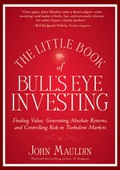 |
|
| by John Mauldin | |
| “Faced with all the negative news for investors, it would be easy to conclude that investing in the stock market with the hope of making any profit at all would be a fool’s errand. With every challenge, there is an opportunity for growth… Now is the time to take a deep breath, regain your focus, concentrate on your investment target, and pull the trigger.” “John Mauldin understands the complexities of investing in today’s tumultuous global environment.”
—David Rosenberg To profit in today’s markets, outdated strategies and played out markets are a sure road to failure. Investors need to look where the market is going—not where it’s been—and approach the market with a different set of tools than they used in the past. Best-selling author John Mauldin’s new book teaches you how to read the direction of the market, so you can make decisions that capitalize on today’s investment opportunities. He starts by debunking the myths promoted by Wall Street, and explains…
John’s book will help you identify trends that show you where the market is headed, rather than where it’s been. It will help you understand how to find value in stocks—essential for small investors. And it will help you understand when to buy, when to sell, when to be patient, and when to cut your losses or take your profits. The quick-reading The Little Book of Bull’s Eye Investing will give you the insight and tools—along with perhaps some heightened self-awareness—you need to profit in this complex market. Praise for The Little Book of Bull’s Eye Investing:“John Mauldin understands the complexities of investing in today’s tumultuous global environment. This is an invaluable guide for identifying the certainties in an increasingly uncertain market climate, and the profitable opportunities that will emerge.” —David Rosenberg “Successful investing requires making sense of the big picture and helping investors gain perspective. The Little Book of Bull’s Eye Investing is a must-read. Once again, John Mauldin has nailed it!” —Jon Sundt “Be prepared to discover what readers of John Mauldin’s online newsletter already know—his practical and sensible investment advice, drawn from a deep knowledge of markets and history. In this book, John lays out—in his appealing style—not only the essence of bull’s eye investing, but also how not to fail as an investor.” —A. Gary Shilling “No one does a better job of synthesizing wide ranging sources of market wisdom than John Mauldin. His unique perspective often reveals what professionals miss and what Mom and Pop investors have yet to learn.” —Barry Ritholtz |
|
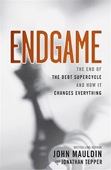 |
|
| by John Mauldin | |
“The definitive book on economic recessions.”John Mauldin’s latest book, Endgame, details the Debt Supercycle and the sovereign debt crisis, and shows that, while there are no good choices, the worst choice would be to ignore the deleveraging resulting from the credit crisis. “This is an extremely powerful, sobering, well written and highly accessible book.” —Mohamed A. El-Erian Greece is a basket case, Ireland on life support, and Japan a bug in search of a windshield. In the times ahead, the global sovereign debt and credit crisis will continue to spread like wildfire. And while no nation, developed or emerging, can escape the pain, the extent of the disaster and how it plays itself out will vary from country to country. Endgame provides the road map ahead. In Endgame, authors John Mauldin and Jonathan Tepper:
Whether you call it the Great Recession, the Great Financial Crisis, or the Global Debt Crisis, what we are experiencing is unlike anything seen in 80 years. Now is not the time to succumb to panic and superstition. It is a time for courage and intelligent decision making informed by the brand of rational analysis and wisdom you’ll find in Endgame. Critical acclaim for John Mauldin’s Endgame:“This is an extremely powerful, sobering, well written and highly accessible book. It will demonstrate to you why there are no painless solutions to the mounting debt problems around the world—something that too many people are yet to realize. It will take you on a well-documented journey through the debt super cycle, making stops around the world and at critical junctures. And it is a must-read for anyone wishing to understand the global debt dynamics and ways to protect against its bad consequences.” —Mohamed A. El-Erian “No one has thought more creatively about the economy. Mauldin’s weekly newsletter is a must-read and his book is even more important if you want to understand a rapidly changing world.” —Newt Gingrich “Successful investors explore all possibilities. You should read this book so you can succeed in case the Endgame is our future.” —Jim Rogers |
|
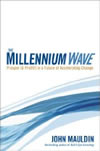 |
|
| by John Mauldin | |
| A forward-looking guide to the changes that will impact the investment environmentJohn Mauldin is a recognized expert and leader on investment issues, who has the unique ability to present complex financial topics in an accessible manner. In his latest book, The Millennium Wave, Mauldin explains how we are entering a decade where change will come faster and be more profound than at any time in history, and gives investors the strategies necessary to profit from what he predicts will happen. Mauldin describes the Millennium Wave as a combination of multiple innovation waves (the Information, Biotech, Quantum, and Energy waves) coupled with profound societal changes (demographics, the increase in globalization, and significant geopolitical changes). He contends that all these events or “waves” will occur in such a short period of time that they will create one of the greatest investment opportunities ever seen–as whole new companies and processes are created. The Millennium Wave prepares investors for these seismic technological and societal shifts, and reveals how nimbleness and an ability to make decisions–rather than passively investing in indexes–will help investors take full advantage of these upcoming changes. Filled with in-depth insight and practical advice, The Millennium Wave will show investors how they can benefit from the single largest period of transformation in human history. | |
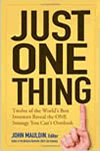 |
Just One Thing: Twelve of the World’s Best Investors Reveal the One Strategy You Can’t Overlook |
| by John Mauldin | |
| Amazon Review: Whether from business-focused cable TV channels, newspapers, magazines, Web sites, or friends and family, investment advice comes these days from every corner. The nagging question for conscientious investors remains, though: how to separate good advice from bad? In a world of squawking television commentators and garish headlines, who and what should we trust? With Just One Thing, veteran investment writer John Mauldin offers his answer: take just the best advice, from the best investors, and discard everything else. Mauldin has solicited 12 leading investors for what each considers his most valuable insight or lesson over a long and illustrious investment career–the “one thing” he considers most important to investing–and gathered the tips for future generations of investors to learn.The lessons which Mauldin has compiled in this thin, readable volume range widely. Some readers may enjoy the folksier tone of hedge fund manager Andy Kessler’s piece, which analogizes investing to a hike up New England’s Mt. Washington, on a foggy day. Other may prefer the approach of bond investor Gary Shilling, who argues for finding and developing a consistent and long-term narrative (or “story” about a market) around which to build investment picks. Yet others may find it most comforting to go with financial analyst Rob Arnott, who runs a multi-billion dollar fund for Pimco and who anchors his market analysis in deep skepticism and extensive quantitative analytics.As with the larger market, Mauldin’s group of 12 expert investors brings its own mix of philosophies, tactics, and personalities to investing, and in his notes between each selection, Mauldin is careful not to tip his hand favoring one or the other. Instead, quality for Mauldin rests in the survey of the masters, and the restriction of those masters to “just one thing” each. Mauldin should know: as the author of Bull’s Eye Investing: Targeting Real Returns in a Smoke and Mirrors Market, as well as a weekly investment newsletter with readership over one million, he has seen his share of both charlatans and geniuses.Mauldin’s work can be taken a couple of different ways. For younger investors, it may provide a valuable survey of different investment philosophies, and the opportunity to learn just enough to undertake further research elsewhere. For more experienced investors it can provide the possibility of a new idea gleaned here or there, some new concept that may have been overlooked previously. Either way, both audiences will benefit from the diversity of perspectives included in this book. In an increasingly chaotic and noise-filled world, trusted sources which give such sure-handed perspective on the business of investments deserve high praise. –Peter Han –This text refers to the Hardcover edition. |
|
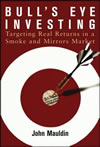 |
Bull’s Eye Investing: Targeting Real Returns in a Smoke and Mirrors Market |
| by John Mauldin | |
| From the Inside Flap: The key to successful investing today is knowing where the markets and economy are going, not where they have been, and focusing on absolute returns—-real profits in your pocket. You, the contemporary investor, instinctively know that the markets of today—-and the forces that drive them—-are quite different than those of past decades. Your intuition tells you that if you are to be successful in the future, you must adjust your investment strategy to reflect the new economic realities. But what strategies? What adjustments? Where can you turn for reality-based answers?In the positive and forward-thinking Bull’s Eye Investing: Targeting Real Returns in a Smoke and Mirrors Market, financial expert John Mauldin makes a powerful case regarding the future direction of the markets and what you must do to be successful in them. Mauldin lays a solid foundation for his argument by examining six major (and very different) ways to look at the stock market as well as the numerous ways Wall Street tries to entice unknowing investors to keep buying overvalued products. Marshalling a huge array of facts and sources, Mauldin looks at these and other issues, including the effects of value, risk, market psychology, and demographics on your potential investments. He details a new approach to investing that will allow you to successfully adjust to the new reality of investing.In a straightforward and easy-to-understand style, Mauldin helps you understand why traditional stock portfolios shouldn’t be your primary investment vehicle in the coming years, and how absolute return vehicles, such as hedge funds (Chapters 20—22), specific types of bonds, and certain types of value-oriented stocks (Chapters 16—18), and investments can help you control risk, while carefully and methodically growing your investments over the next decade.Helping you think outside of the Wall Street box, Bull’s Eye Investing focuses on finding value and controlling risk, while working with trends (which Mauldin forecasts for you) rather than against them. It will show you why investors must focus on absolute returns instead of relative returns, as well as how research and homework will be rewarded—-rather than blind trust in an ever-spiraling market.Good markets are followed by bad markets, which are again followed by good markets. While no one can predict exactly when these markets will begin or end, there’s a pretty good chance that this cycle will continue to repeat itself. As an investor, success hinges on your understanding of these ever-changing economic and investment cycles—-and your response to them. Bull’s Eye Investing can help you make the most of these trends, by showing you how to target your investments toward where the markets will be, not where they have been. |
|
 |
Unexpected Returns: Understanding Secular Stock Market Cycles |
| by Ed Easterling | |
| Ed Easterling has given the world of investing the single best, easy-to-read, study of stock market cycles of which I know. He lays out a path for you to find your own Unexpected Returns, showing you how to confidently navigate the waters of market volatility. Serious investors will devour this book and profit. It should be required reading for investment professionals.Book Description: (from Amazon) This investment book uses extensive full-color graphics to explain the fundamentals of the markets-an essential resource before reading how-to books or engaging investment advice. It is a unique combination of investment art and investment science that enables the reader to differentiate between irrational hope and a rational view of current market conditions. | |
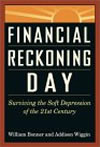 |
Financial Reckoning Day: Surviving the Soft Depression of the 21st Century |
| by Bill Bonner | |
| Review by Amazon.com: The investor’s guide to surviving a slowing economyFinancial Reckoning Day is a “big picture” investment book that skillfully illustrates how the American economy is following in the footsteps of the Japanese economy, which fell into a long, soft “slow motion” deflationary depression brought about by two irresistible forces–its aging population and a structural reaction to the greatest financial boom in its history. With the U.S. market in a downturn, investors are looking for answers to why this is happening and what they can do to protect their investments. Financial Reckoning Day will provide the answers to those questions. Written by a team of well-respected financial professionals–whose publications and newsletters reach a quarter million investors each week–this book shows readers how the economic megaboom of the 1990s will inevitably be followed by a megabust in the first decade of the twenty-first century. Many believe that depressions are artifacts of financial history, not features of the future. Financial Reckoning Day shows why these events are a real possibility and discusses the dangers they pose to investors around the world, arguing that popular democracy, aging populations, and bad economic theories doom Western economics to bear markets, and falling consumer spending for years to come. More importantly, it shows readers how they can survive and thrive during such events. |
|
 |
Fooled By Randomness: The Hidden Role of Chance in the Markets and in Life |
| by Nassim Nicholas Taleb | |
| One of the best books on risk and investing I have read. I consider it essential reading for anyone who wants to be a better investor. I highly recommend the book. (John Mauldin)Review by Amazon.com: In Fooled by Randomness, Nassim Nicholas Taleb, a professional trader and mathematics professor, examines what randomness means in business and in life and why human beings are so prone to mistake dumb luck for consummate skill. This eccentric and highly personal exploration of the nature of randomness meanders from the court of Croesus and trading rooms in New York and London to Russian roulette, Monte Carlo engines, and the philosophy of Karl Popper. Part of what makes this book so good is Taleb’s ability to make seemingly arcane mathematical concepts (at least to this reviewer) entirely relevant in evaluating and understanding everything from the stock market to the success of those millionaires cited in the aforementioned bestsellers. Here’s an articulate, wise, and humorous meditation on the nature of success and failure that anyone who wants a little more of the former would do well to consider. Highly recommended. |
|
 |
John Adams |
| by David McCullough | |
| One of the best written and more fascinating books on history I have read in years. John Adams comes alive in this tome, and I found it hard to put down. (John Mauldin)It was listed as Amazon.com’s best of 2001. Their review: Left to his own devices, John Adams might have lived out his days as a Massachusetts country lawyer, devoted to his family and friends. As it was, events swiftly overtook him, and Adams–who, David McCullough writes, was “not a man of the world” and not fond of politics–came to greatness as the second president of the United States, and one of the most distinguished of a generation of revolutionary leaders. He found reason to dislike sectarian wrangling even more in the aftermath of war, when Federalist and anti-Federalist factions vied bitterly for power, introducing scandal into an administration beset by other difficulties–including pirates on the high seas, conflict with France and England, and all the public controversy attendant in building a nation.Overshadowed by the lustrous presidents Washington and Jefferson, who bracketed his tenure in office, Adams emerges from McCullough’s brilliant biography as a truly heroic figure–not only for his significant role in the American Revolution but also for maintaining his personal integrity in its strife-filled aftermath. McCullough spends much of his narrative examining the troubled friendship between Adams and Jefferson, who had in common a love for books and ideas but differed on almost every other imaginable point. Reading his pages, it is easy to imagine the two as alter egos. (Strangely, both died on the same day, the 50th anniversary of the Declaration of Independence.) But McCullough also considers Adams in his own light, and the portrait that emerges is altogether fascinating. |
|
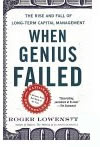 |
When Genius Failed: The Rise and Fall of Long-Term Capital Management |
| by Roger Lowenstein | |
| An analysis of the Long Term Capital debacle of 1998 and one of the best written books I have read in a long time. Completely fascinating from beginning to end. Read this and then Fooled by Randomness (above) to get a feel for how hard it is to choose money managers. (John Mauldin)Amazon.com review: On September 23, 1998, the boardroom of the New York Fed was a tense place. Around the table sat the heads of every major Wall Street bank, the chairman of the New York Stock Exchange, and representatives from numerous European banks, each of whom had been summoned to discuss a highly unusual prospect: rescuing what had, until then, been the envy of them all, the extraordinarily successful bond-trading firm of Long-Term Capital Management. Roger Lowenstein’s When Genius Failed is the gripping story of the Fed’s unprecedented move, the incredible heights reached by LTCM, and the firm’s eventual dramatic demise.Lowenstein, a financial journalist and author of Buffett: The Making of an American Capitalist, examines the personalities, academic experts, and professional relationships at LTCM and uncovers the layers of numbers behind its roller-coaster ride with the precision of a skilled surgeon. The fund’s enigmatic founder, John Meriwether, spent almost 20 years at Salomon Brothers, where he formed its renowned Arbitrage Group by hiring academia’s top financial economists. Though Meriwether left Salomon under a cloud of the SEC’s wrath, he leapt into his next venture with ease and enticed most of his former Salomon hires–and eventually even David Mullins, the former vice chairman of the U.S. Federal Reserve–to join him in starting a hedge fund that would beat all hedge funds.LTCM began trading in 1994, after completing a road show that, despite the Ph.D.-touting partners’ lack of social skills and their disdainful condescension of potential investors who couldn’t rise to their intellectual level, netted a whopping $1.25 billion. The fund would seek to earn a tiny spread on thousands of trades, “as if it were vacuuming nickels that others couldn’t see,” in the words of one of its Nobel laureate partners, Myron Scholes. And nickels it found. In its first two years, LTCM earned $1.6 billion, profits that exceeded 40 percent even after the partners’ hefty cuts. By the spring of 1996, it was holding $140 billion in assets. But the end was soon in sight, and Lowenstein’s detailed account of each successively worse month of 1998, culminating in a disastrous August and the partners’ subsequent panicked moves, is riveting.The arbitrageur’s world is a complicated one, and it might have served Lowenstein well to slow down and explain in greater detail the complex terms of the more exotic species of investment flora that cram the book’s pages. However, much of the intrigue of the Long-Term story lies in its dizzying pace (not to mention the dizzying amounts of money won and lost in the fund’s short lifespan). Lowenstein’s smooth, conversational but equally urgent tone carries it along well. The book is a compelling read for those who’ve always wondered what lay behind the Fed’s controversial involvement with the LTCM hedge-fund debacle. |
|
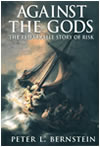 |
Against the Gods: The Remarkable Story of Risk |
| by Peter Bernstein | |
| I found this book to be well written and an excellent study of how the world has come to view risk. This is a book for serious investors and historians. This is a highly recommended book. (John Mauldin)Bernstein has written a comprehensive history of man’s efforts to understand risk and probability, beginning with early gamblers in ancient Greece, continuing through the 17th-century French mathematicians Pascal and Fermat and up to modern chaos theory. Along the way he demonstrates that understanding risk underlies everything from game theory to bridge-building to winemaking. | |
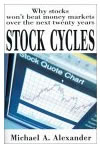 |
Stock Cycles: Why Stocks Won’t Beat Money Markets over the Next Twenty Years |
| by Michael Alexander | |
| This started as a self-published book, and is now making the mainstream. A well reasoned book on Kondratieff long wave theory, and other stock cycles, Alexander makes a powerful case for a long term secular bear. Read it. (John Mauldin)From Amazon.com: Dr. Alexander has tackled one of the most difficult, ambiguous and controversial topics of economics: long wave cycles and their effects on stock market prices. His text along with the more popular “Irrational Exuberance” by Robert Shiller is a highly cautionary perspective on stock market investments. Both books appeared almost simultaneously with the downturn of the market in January 2000. Both books, for different reasons and by different routes, arrived at the conclusion that that the market was grossly overvalued.Alexander takes a historical approach by looking at the performance of traditional indicators over many decades or even centuries. He analyzes the statistical probability of trends continuing for one, five, ten and twenty years, and then derives relationships that can be used to predict future behavior. One of the more interesting indices developed by Alexander is the P/R or Price/Resources ratio. The Price term is the traditional index of stock prices. The Resource term represents the sum of “plant, equipment, technical knowledge, employee skills, market, position, etc.” that enable the operator to produce a profit. Alexander aggregates and normalizes this value to constant dollars. He then uses the P/R ratio to express whether stocks are over or under valued.Shiller tends to camouflage his statistics, but makes a much stronger argument for how people think about stock values: When prices are going up, it is easy to get excited about buying; prices rise, excitement rises, and they feed on one another. When prices are going down, people get discouraged, prices fall, people panic and loose faith in the ability of the market to produce future value. While we know and understand this relationship, we get caught up in it all the same.The second major contribution that Alexander makes to long-term analysis is in tying stock cycles to technology cycles. This section of the text draws heavily on the Kondratiev cycle theory, but it then integrates this analysis into a more contemporary treatment that focuses on innovation and the resulting investment booms. It is easier to discern technology cycles from a historical perspective, and it is probably fair to say that earlier in the industrial revolution, basic changes did not come with the frequency that we are experiencing today. Even so, the telegraph, telephone, telecom and internet investment booms have clearly come one after another to produce the crescendo of investment frenzy that we experienced at the end of the 20th century. That is starting to unwind now, and P/E (or P/R) ratios are beginning to approach, however painfully, something that is closer to a historical norm. What we can’t really know is when the aggregate trend will turn around or how the change will manifest itself.Alexander does not present a pessimistic view. Indeed, if one were to consider potential energy or resource shortages, economic disparity, agricultural or environmental dislocations, there could be much more room for gloom. On the other hand, he has not fully considered the potential positive effects of biotechnology on agriculture, health and the chemical industry (which is a bit surprising considering his background), the efficient allocation of resources that is resulting from greater accessibility of information or the general synergy in technology that is resulting from the interactions of computational, biological, physical and chemical sciences.”Stock Cycles” is a highly useful book for anyone interested in technical prognostication about the future movements of markets. It will loose some readers with its charts, equations and generally dry style, but it is a serious and meritorious effort to put some sense into what is an otherwise emotion-driven field. Most readers would probably wish that they had read and heeded the advice from both Alexander and Shiller as soon as the texts appeared. |
|
